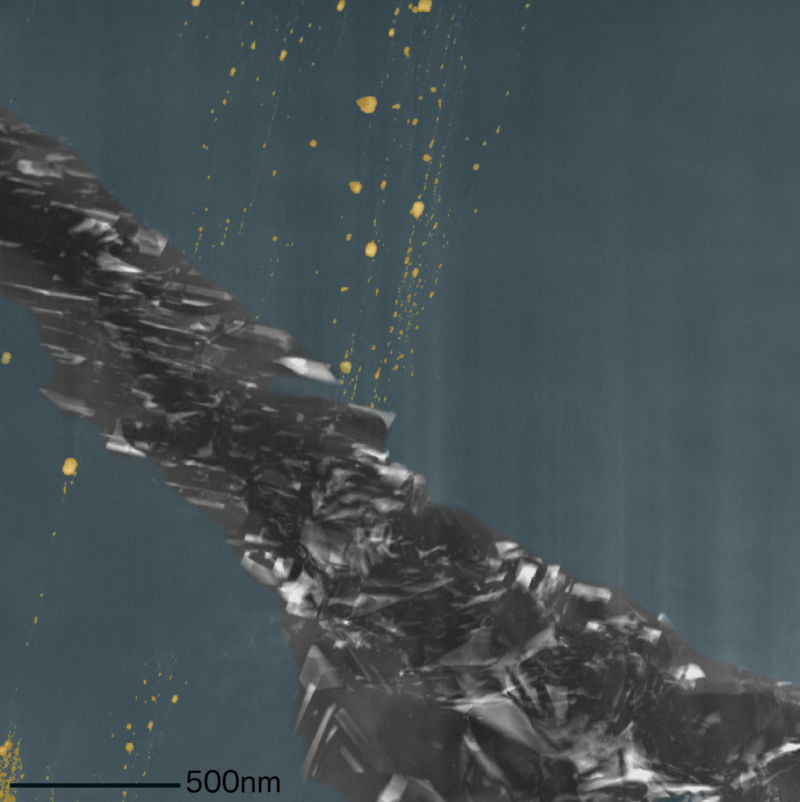
On Earth, diamonds are time capsules with fascinating stories to tell. After all, they form at great depths—below the tectonic plates that make up Earth’s crust. It's only because they travel to the surface with the volcanic equivalent of a jet pack that we're able to see them at all.
But there's another way to get your hands on a diamond: wait for one to crash to Earth inside a meteorite. And in the case of a new study published this week, it might even tell a story of a different planet, one that died in the early days of our Solar System.
Diamonds from space
The meteorite in question fell in 2008 in Sudan and contained a type of meteorite rock called “ureilite” that is composed of minerals you’d only find in the deep mantle of the Earth. Among those minerals were microscopic crystals of diamond and graphite—two minerals composed entirely of carbon atoms.
Researchers have posed a few different ideas to explain how those minerals got there. Graphite could be converted to diamond due to the shock pressure of a large enough impact between two bodies of rock in space. Very early in the hot formation of the Solar System, carbon vapor could even have condensed into these minerals in the right conditions. And finally, the diamond could have formed like it does here, deep within a large planetary body.
A 2015 study of some of the diamonds in this meteorite concluded that they looked like pieces of a single, larger diamond broken up by bands of graphite. Diamonds about 0.1 millimeters across would actually be too big to be explained by two of the three possibilities, leaving only formation inside a planetary body.
To check on that explanation, a group led by Farhang Nabiei of the Swiss Federal Institute of Technology in Lausanne threw the diamonds under a transmission electron microscope.
As with Earth's diamonds, these tiny meteorite diamonds contain even tinier blobs of other minerals, which are generally what tell a diamond’s most interesting stories. In this case, the blobs are composed of iron and sulfur minerals scattered throughout both the diamonds and the bands of graphite that separate them.
Formation
These inclusions can tell us a couple of things. First, the researchers’ explanation for the graphite breaking up the diamond is that pre-existing diamonds were messed up by a later collision event—probably one that blasted apart the planetary body and freed these diamonds that were deep inside it. After being freed, the sudden pressure drop could cause portions of diamond to convert to graphite. The iron and sulfur mineral blobs look like they melted and then recrystallized as lower-pressure minerals at the same time that the graphite formed.
While each blob contains several different low-pressure minerals, the total chemistry of each blob is exactly the same. And that chemistry matches a high-pressure mineral that only forms under at least 20 gigapascals of pressure. That would mean that the original planetary body was at least as big as the planet Mercury, assuming these diamonds formed at its center.
The researchers note that our simulations of the formation of the Solar System produce tens of “planetary embryos” that can be as big as Mars. In the models, these embryos crash into each other, shattering or glomming together until only a few rocky planets remain. But finding evidence of these long-gone embryos is obviously difficult, and no one has managed to do so.
If the researchers’ interpretation of these diamonds is correct, however, this is the first such evidence. A planetary embryo large enough to host these diamonds within it could have been blasted apart in the first 10 million years of the churning formation of the Solar System. Some of the pieces would have whirled around in space for 4.5 billion years—until one smacked into the Nubian Desert in 2008 so we could pick it up and piece together that origin story.
Nature Communications, 2018. DOI: 10.1038/s41467-018-03808-6 (About DOIs).
reader comments
28